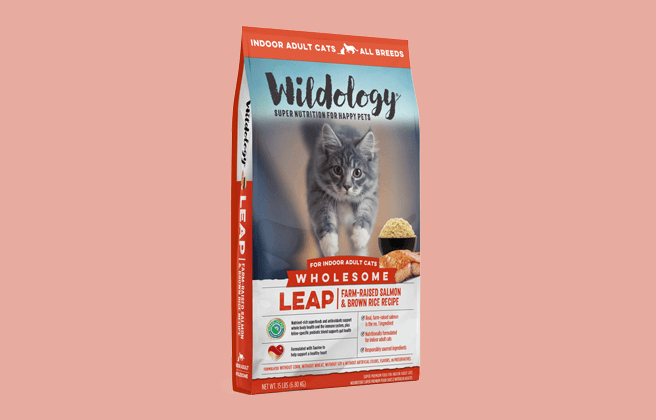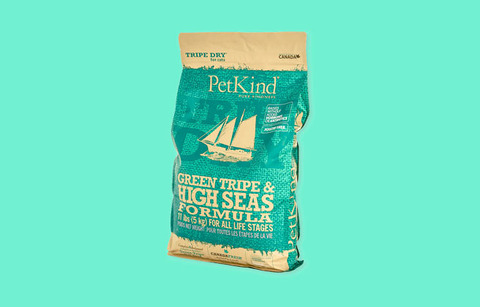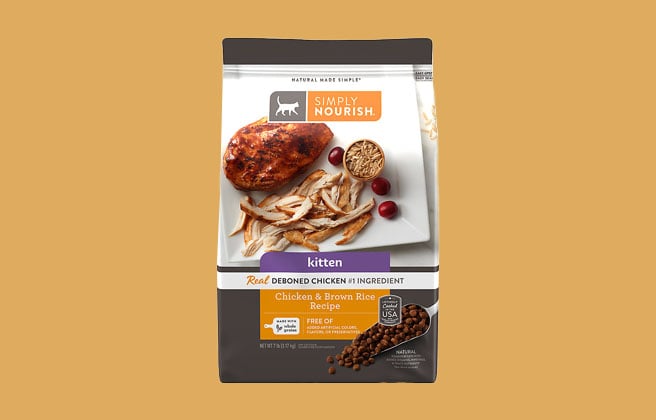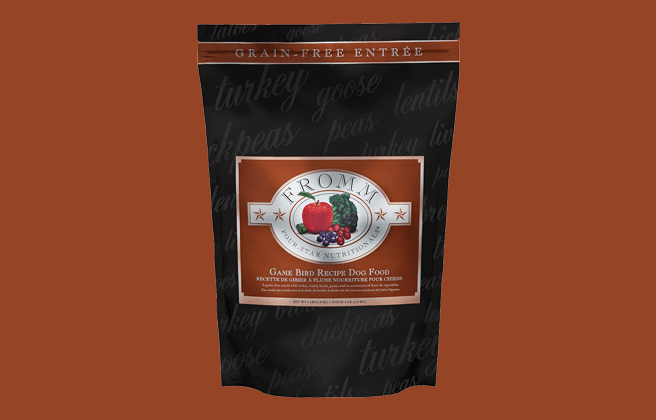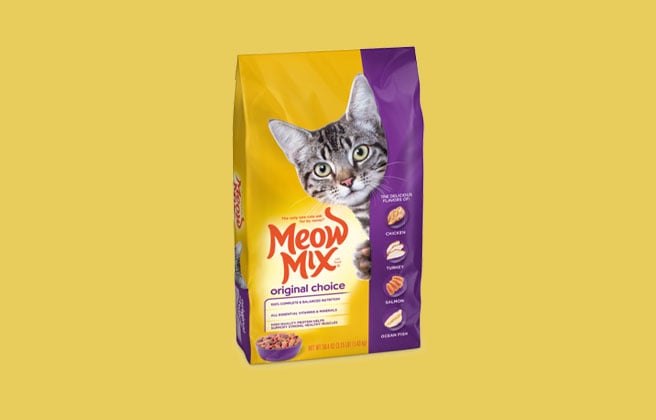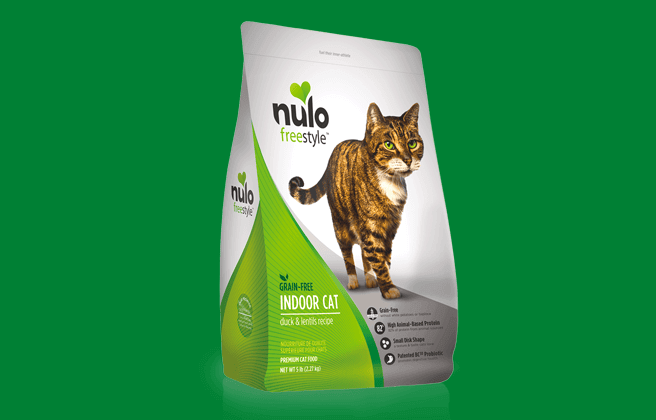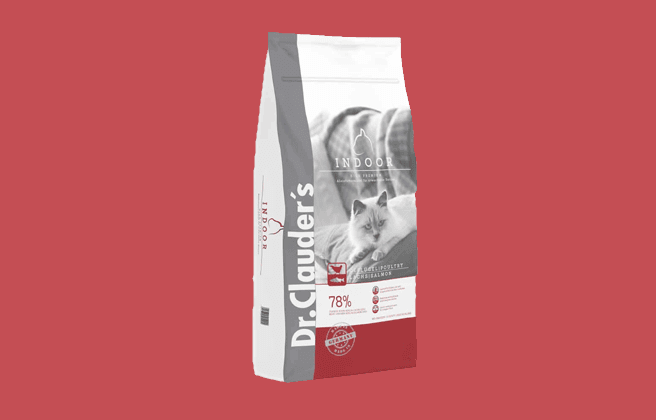
Our Verdict
Dr Clauder High Premium dry product range is made of five recipes which all receive the Cat Food Advisor rating, 3.5 stars.
This range of food is formulated for indoor and outdoor cats and kittens. Although there is animal protein in this food, it does not specify which animal it comes from. In addition, the first ingredient in some recipes is rice which is disappointing.
Pros
- High percentage of animal protein
- No artificial additives
- Easy digestion
Cons
- High in carbohydrate
- Low in protein
The table below shows each recipe in the range including our rating and the AAFCO nutrient profile: Growth (kitten), Maintenance (adult), All Life Stages, Supplemental or Unspecified.
| Product line | Rating | AAFCO |
|---|---|---|
| Dr. Clauder's High Premium Adult Grain Free | 3.5 | U |
| Dr. Clauder's High Premium Indoor | 3.5 | U |
| Dr. Clauder's High Premium Kitten | 3.5 | U |
| Dr. Clauder's High Premium Outdoor | 3.5 | U |
| Dr. Clauder's High Premium Sterilised Senior Light | 3.5 | U |
Recipe and Label Analysis
Dr. Clauder’s High Premium Indoor recipe was selected to represent the other products in the line for a detailed recipe and nutrient analysis.
Label and nutrient data below are calculated using dry matter basis.
Dr. Clauder's High Premium Indoor recipe
Estimated Dry Matter Nutrient Content
Protein
Fat
CarbsCarbohydrates
Rice, poultry protein (dehydrated), fish protein, liver meal, poultry fat, hydrolysed protein, eggs (dehydrated), linseed, beet pulp (sugar reduced), rice bran, cellulose, fish oil, yeast (dehydrated), chicory powder (dehydrated), potassium chloride.
Fiber (estimated dry matter content) = 4%
Red denotes any controversial items
Ingredients Analysis
The first ingredient is rice. Is this whole grain rice, brown rice or white rice? Since the word “rice” doesn’t tell us much, it’s impossible to judge the quality of this item.
The second ingredient is poultry protein (dehydrated). Dehydrated poultry is considered a meat concentrate and contains more than four times as much protein as fresh chicken.
The third ingredient is fish protein. Because it is a protein concentrate, fish protein contains almost 300% more protein than fresh fish itself. Fish protein has a protein content of at least 70%.
Fish protein is typically obtained from the “clean, undecomposed whole fish or fish cuttings” of commercial fish operations. 1
The fourth ingredient is liver meal. Normally, liver can be considered a quality component. However, in this case, the source of the liver is not identified. For this reason, it’s impossible to judge the quality of this item.
The fifth ingredient is poultry fat. Poultry fat is obtained from rendering, a process similar to making soup in which the fat itself is skimmed from the surface of the liquid.
Poultry fat is high in linoleic acid, an omega-6 fatty acid essential for life.
However, poultry fat is a relatively generic ingredient and can be considered lower in quality than a similar item from a named source animal (like chicken fat).
The sixth ingredient is hydrolyzed protein. Hydrolyzed animal protein is considered a protein concentrate. Being hydrolyzed means that the animal proteins have been chemically broken-down into their component amino acids.
Hydrolyzed proteins are considered hypoallergenic as they are not identifiable by the body to trigger allergy reactions. Unfortunately, this particular item is anonymous. Because various animal proteins contain different nutrient and amino acid profiles, we would have preferred to have known the source species.
The seventh ingredient is eggs (dehydrated), a dehydrated form of shell-free eggs. Quality can vary significantly. Lower grade egg products can even come from commercial hatcheries – from eggs that have failed to hatch.
In any case, eggs are easy to digest and have an exceptionally high biological value.
The eighth ingredient is linseed. one of the best plant sources of healthy omega-3 fatty acids. Provided they’ve first been ground into a meal, linseeds are also rich in soluble fiber.
However, linseed contains about 19% protein, a factor that must be considered when judging the actual meat content of this cat food.
From here the list goes on to include a number of other items. But to be realistic, ingredients located this far down the list (other than nutritional supplements) are not likely to affect the overall rating of the product.
Recipe star rating 3.5
Nutrient Analysis
Based on its ingredients alone, Dr. Clauder’s High Premium Indoor recipe looks like an average dry product.
The dashboard displays a dry matter protein reading of 30.1%, a fat level of 11.8% and an estimated carbohydrate level of 50.1%.
As a group, the brand features a below-average protein content of 32.8% and an above-average fat level of 16.9%. Together these figures suggest a carbohydrate content of 42.3% for the overall product line, alongside a fat to protein ratio of 51%.
This means this Dr Clauder High Premium range contains lower than average protein, higher than average carbohydrate and near-average fat, when compared to typical dry cat food.
Final Word
This range of food provides below average protein and very high carbohydrates. In summary, this food offers a reasonable food choice.
Has Dr Clauder cat food been recalled in the past?
No. Dr Clauder does not appear to have had any product recalls.
You can view a complete list of all cat food recalls since 2021 here.
To stay on top of any cat food product recalls, sign up for our free email alerts, here.
About
Dr. Clauder’s was founded by Dr. Heinz Clauder in Hamburg, Germany in 1957, but is now based in Hamminkeln in the lower Rhine Valley in Germany.
Dr. Clauder’s products are sold in approximately 65 countries and the company uses modern production techniques to make premium quality pet food, supplements, and pet care products.
Dr. Clauder’s follows the European Union’s strict production guidelines.
Best cat foods
We uphold the highest editorial standards when creating the authoritative content pet parents rely on and trust.
Every piece of clinical content on the Cat Food Advisor is reviewed by our certified Veterinary Advisory Board, which consists of licensed veterinarians and medically certified specialists.
Our reviews are completely independent; we are not paid by any pet food company to promote their products favorably. We do not accept money, gifts, samples or other incentives in exchange for special consideration. For more information see our Disclaimer & Disclosure page.







